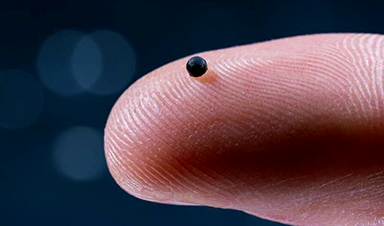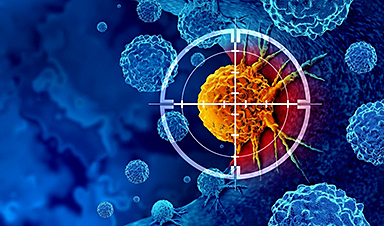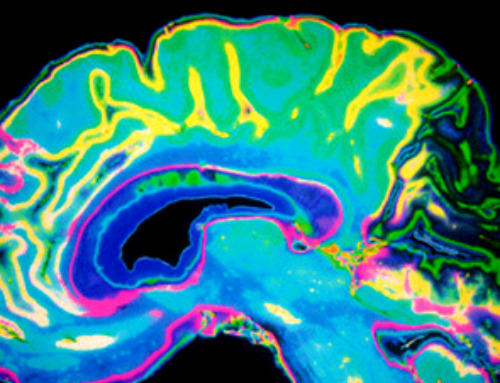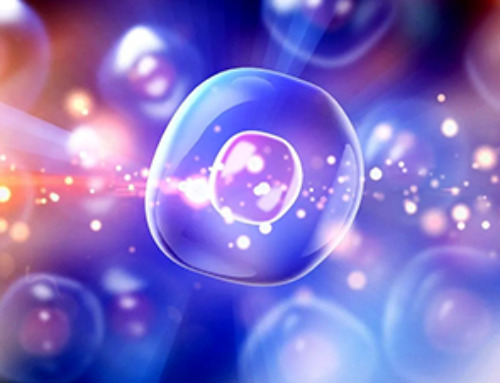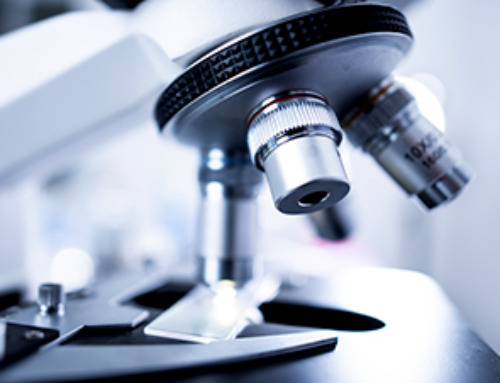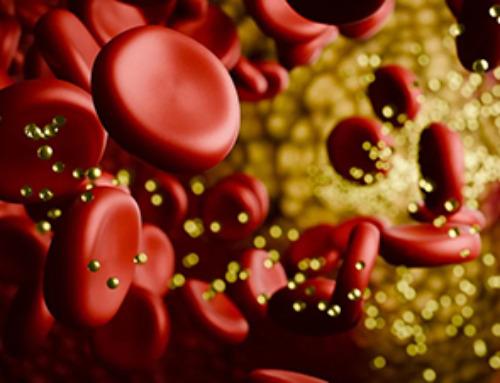Innovative researchers have investigated the potential of incorporating a gelatin methacryloyl hydrogel functionalized with synthetic nanoclay laponite to improve the delivery of osteoblast derived extracellular vesicles for increased bone repair. This research has been published in the International Journal of Molecular Sciences as a bone repair strategy that may aid in alleviating the burden of bone damage.
With bone fracture treatment being a global socioeconomic burden, research into novel treatments has been undertaken such as the use of extracellular vesicles.
Why Are Novel Bone Fracture Treatments Necessary?
There are approximately 10 million people within the UK who have been affected by musculoskeletal disorders, as well as 1.71 billion diagnosed worldwide, as reported by the World Health Organization (WHO). Additionally, a report on osteoporosis has stated this disorder is responsible for 8.9 million fractures annually, worldwide.
With an ageing population, bone health has become a concern globally and so the demand for bone-related treatments is only increasing, illustrating the necessity of research for this field to sustain the exponential growth as well as retain the quality of life for patients.
Autologous bone grafts are currently the gold standard for treating diseased or damaged bones; however, with limitations such as lack of availability, accessibility and donor site morbidity, this route of treatment may not be the most efficient for bone repair.
Additionally, other treatment options have shown positive clinical results, such as combining bone graft substitutes with osteoinductive growth factors including bone morphogenic protein 2. This route can also cause complications with adverse effects such as hematomas and myelopathy.
This field of cell-based tissue engineering has been found to show promise with osteoinductive biomaterials being combined with mesenchymal stromal cells (MSCs) for bone augmentation, however, direct transplant of MSC-based therapies has been shown to have produced adverse effects including immunological rejection, uncontrolled differentiation and even the formation of neoplasms.
Other limitations for cell-based therapies for clinical translation also include cost, lack of scalability within manufacturing, governmental regulations as well as potential ethical issues.
This realization has led researchers to investigate cell-free strategies as a method to promote bone regeneration and repair for diseases and disorders.
Innovative Bone Repair Approach
Extracellular vesicles (EV) could be the potential key to bone regeneration, with these acellular tools being lipid nanoparticles that can carry a diverse range of biological cargo, such as nucleic acids and proteins.
These naturally derived nanoparticles hold a significant function in bone development with roles in mediating intercellular communication between osteoblasts and osteoclasts, bone cells that synthesize and break down bone tissue, respectively.
Additionally, the inclusion of epigenetics to modify the differentiation capacity of cells for bone augmentation holds the potential to enhance EV mineralization.
Previous research has found EVs that are isolated from osteoblasts and treated with the histone deacetylase inhibitor Trichostatin A (TSA), can lead to enhanced osteoinductive potency, which may be due to enrichment in pro-osteogenic microRNAs and transcriptional regulating proteins.
However, the issue with EV consists of the short half-life which limits their therapeutic utility, with local administration into the defect area having transient results and requiring effective injections to be clinically successful.
This illustrates the necessity for advancements to effectively facilitate the delivery of EVs in order to improve their bioavailability in situ.
Innovative Research
Novel research has included the utilization of gelatin methacryloyl (GelMA) hydrogels which were functionalized with synthetic nanoclay laponite (LAP) with the aim of improving local retention and control delivery of osteoblast-derived and TSA treated EVs that have been epigenetically enhanced for bone repair.
This innovative combination has been found to enhance the proliferation of human bone marrow stromal cells (hBMSCs) as well as increasing migration, histone acetylation and mineralization compared to the control group of untreated EVs. Additionally, the TSA-EV functionalized GelMA-LAP hydrogel was able to significantly promote encapsulated hBMSCs extracellular matrix collagen production as well as increase mineralization.
This illustrates the significance of combining epigenetics through the histone deacetylase inhibitor Trichostatin A (TSA) with osteoblast-derived EVs as well as a nanocomposite hydrogel which was able to enhance the therapeutic efficacy of delivery for bone repair and regeneration.
Future Translation
The translation for this research consists of the development of using EVs as a pro-osteogenic acellular tool; this has the benefit of not using a cell-based therapy which can have complications such as high expense as well as immune rejection. Additionally, this innovative approach also solves the challenge of the half-life originally attributed to EVs.
This nanotechnology has the potential to be used clinically as a method to promote bone regeneration, a field that has limited treatments and so an innovative development can lead to quality care of a global aging population.
News
New technique overcomes technological barrier in 3D brain imaging
Scientists at the Swiss Light Source SLS have succeeded in mapping a piece of brain tissue in 3D at unprecedented resolution using X-rays, non-destructively. The breakthrough overcomes a long-standing technological barrier that had limited [...]
Scientists Uncover Hidden Blood Pattern in Long COVID
Researchers found persistent microclot and NET structures in Long COVID blood that may explain long-lasting symptoms. Researchers examining Long COVID have identified a structural connection between circulating microclots and neutrophil extracellular traps (NETs). The [...]
This Cellular Trick Helps Cancer Spread, but Could Also Stop It
Groups of normal cbiells can sense far into their surroundings, helping explain cancer cell migration. Understanding this ability could lead to new ways to limit tumor spread. The tale of the princess and the [...]
New mRNA therapy targets drug-resistant pneumonia
Bacteria that multiply on surfaces are a major headache in health care when they gain a foothold on, for example, implants or in catheters. Researchers at Chalmers University of Technology in Sweden have found [...]
Current Heart Health Guidelines Are Failing To Catch a Deadly Genetic Killer
New research reveals that standard screening misses most people with a common inherited cholesterol disorder. A Mayo Clinic study reports that current genetic screening guidelines overlook most people who have familial hypercholesterolemia, an inherited disorder that [...]
Scientists Identify the Evolutionary “Purpose” of Consciousness
Summary: Researchers at Ruhr University Bochum explore why consciousness evolved and why different species developed it in distinct ways. By comparing humans with birds, they show that complex awareness may arise through different neural architectures yet [...]
Novel mRNA therapy curbs antibiotic-resistant infections in preclinical lung models
Researchers at the Icahn School of Medicine at Mount Sinai and collaborators have reported early success with a novel mRNA-based therapy designed to combat antibiotic-resistant bacteria. The findings, published in Nature Biotechnology, show that in [...]
New skin-permeable polymer delivers insulin without needles
A breakthrough zwitterionic polymer slips through the skin’s toughest barriers, carrying insulin deep into tissue and normalizing blood sugar, offering patients a painless alternative to daily injections. A recent study published in the journal Nature examines [...]
Multifunctional Nanogels: A Breakthrough in Antibacterial Strategies
Antibiotic resistance is a growing concern - from human health to crop survival. A new study successfully uses nanogels to target and almost entirely inhibit the bacteria P. Aeruginosa. Recently published in Angewandte Chemie, the study [...]
Nanoflowers rejuvenate old and damaged human cells by replacing their mitochondria
Biomedical researchers at Texas A&M University may have discovered a way to stop or even reverse the decline of cellular energy production—a finding that could have revolutionary effects across medicine. Dr. Akhilesh K. Gaharwar [...]
The Stunning New Push to Protect the Invisible 99% of Life
Scientists worldwide have joined forces to build the first-ever roadmap for conserving Earth’s vast invisible majority—microbes. Their new IUCN Specialist Group reframes conservation by elevating microbial life to the same urgency as plants and [...]
Scientists Find a Way to Help the Brain Clear Alzheimer’s Plaques Naturally
Scientists have discovered that the brain may have a built-in way to fight Alzheimer’s. By activating a protein called Sox9, researchers were able to switch on star-shaped brain cells known as astrocytes and turn them into [...]
Vision can be rebooted in adults with amblyopia, study suggests
Temporarily anesthetizing the retina briefly reverts the activity of the visual system to that observed in early development and enables growth of responses to the amblyopic eye, new research shows. In the common vision [...]
Ultrasound-activated Nanoparticles Kill Liver Cancer and Activate Immune System
A new ultrasound-guided nanotherapy wipes out liver tumors while training the immune system to keep them from coming back. The study, published in Nano Today, introduces a biodegradable nanoparticle system that combines sonodynamic therapy and cell [...]
Magnetic nanoparticles that successfully navigate complex blood vessels may be ready for clinical trials
Every year, 12 million people worldwide suffer a stroke; many die or are permanently impaired. Currently, drugs are administered to dissolve the thrombus that blocks the blood vessel. These drugs spread throughout the entire [...]
Reviving Exhausted T Cells Sparks Powerful Cancer Tumor Elimination
Scientists have discovered how tumors secretly drain the energy from T cells—the immune system’s main cancer fighters—and how blocking that process can bring them back to life. The team found that cancer cells use [...]















